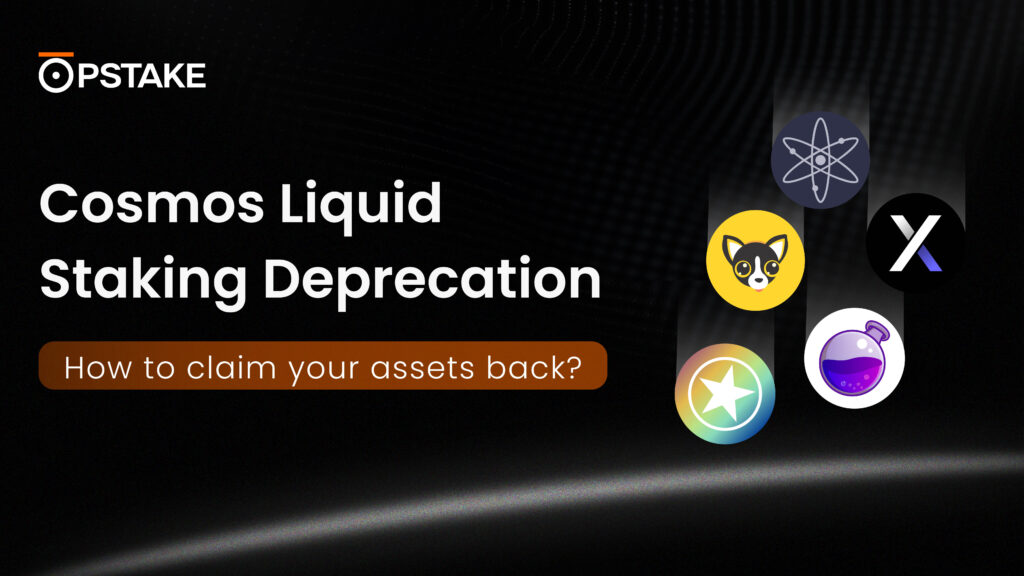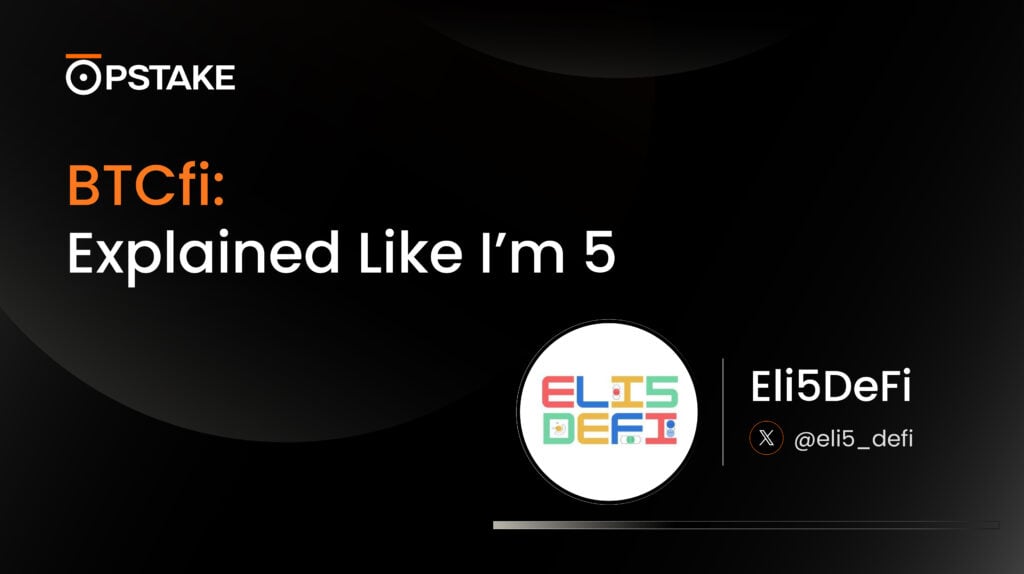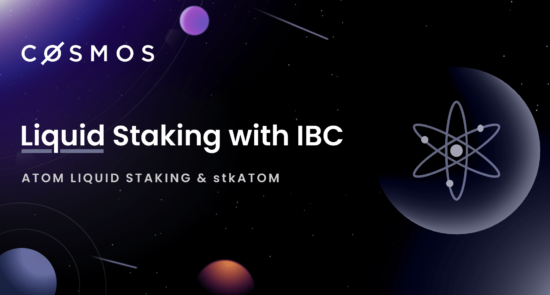DeFi (decentralized finance) in its current state has left an everlasting footprint on the blockchain space, completely transcending finance in the digital realm and sitting at a current $66B+ in TVL (Total Valued Locked).
Originating on the Ethereum network, DeFi has now expanded to the far corners of the industry, now being supported across multiple blockchain networks. In particular, Cosmos made huge leaps and bounds by introducing IBC (Inter-Blockchain Communication Protocol) to bring interconnectivity to siloed blockchain networks.
When it comes to liquid staking, the industry is growing at a rapid pace but has the potential to unlock greater liquidity and activity with asset interoperability between chains – IBC is set to change this, and ATOM (the native token of Cosmos) has tremendous promise to set things off on the right foot.
Throughout this blog, we’ll cover what IBC is and how Cosmos Hub and staked ATOM fit into the overall picture within the IBC environment.
Why is IBC Important?
Launched in April 2021, IBC is a protocol that allows heterogeneous blockchains to seamlessly and securely talk to each other while guaranteeing reliable, ordered, and authenticated communication, enabling the interchange of assets and services, exchange of value, and enrichment of the Cosmos ecosystem as a whole.
Cross-chain communication between multiple blockchains across Cosmos can help improve horizontal scalability and faster transaction finality, significantly improving capacity issues, transaction confirmation speeds, gas fees, and more.
Since each independent blockchain has its own unique features and key value proposition, it’s natural that there’s a major benefit to interconnecting these networks.
Over the last 30 days, there was $524M+ in IBC volume and 2.6M+ total in IBC transfers across 49 interconnected blockchains. Some of the top IBC-enabled chains include Cosmos Hub, Osmosis, Juno, Persistence, Axelar, Cronos, and more.
Ultimately, IBC is a core component in bringing a multi-chain future to the blockchain space, creating a win-win for users and developers while merging liquidity and applications between various networks to create a truly harmonious and symbiotic ecosystem.
Cosmos Hub & ATOM: The Beating Heart of IBC
Cosmos Hub currently stands strong in the second position behind Osmosis with $181M+ in IBC volume, 3.9M+ transactions, and 310K+ IBC transfers over the past 30 days. The chain sits at the epicenter of the Cosmos ecosystem and was designed as the hub of IBC, serving as the primary source where traffic activity funnels through to other chains.
Additionally, Cosmos Hub has a diverse set of 175 different validators, helping further contribute to its high decentralization.
ATOM is the native token for Cosmos Hub and helps power and run the overall network. The digital asset currently lies within the top 30 cryptocurrencies when it comes to market capitalization, with an overall value of ~$4.6B and a 24H volume of $1B+.
The Need for ATOM Liquid Staking
Users who stake and delegate their ATOM on the network help contribute to its security and functionality. The staking ratio for ATOM is relatively high but has room to grow but still puts Cosmos Hub as the most decentralized and secure blockchain across the Cosmos ecosystem.
Learn more about the latest ATOM staking statistics in pSTAKE’s monthly report: The State of ATOM Staking.
But there’s another side to this story. Previously, ATOM holders only had the option to either traditionally stake on-chain to earn rewards or utilize their tokens across DeFi, introducing a roadblock.
With liquid staking, users can get the best of both worlds, eliminating this issue.
ATOM Liquid Staking Solutions
Liquid staking is becoming ever more promising to further drive adoption and expand use-cases for staked ATOM, for reasons mentioned above.
It has an enormous scope and serves as the most critical piece in the puzzle for the Cosmos ecosystem, holding the key to unlocking hundreds of millions of dollars in staked assets. pSTAKE was the very first to introduce an ATOM liquid staking solution and is soon launching stkATOM on the Persistence Core-1 Chain.
Let’s take a closer look at what they bring to the table:
- pSTAKE: A multi-chain liquid staking protocol that allows users to stake their native ATOM and directly mint stkATOM, the underlying representative token existing as an ERC-20 asset. pSTAKE boasted the highest TVL of any ATOM liquid staking solution and is in the works of deploying stkATOM on the Persistence Core-1 Chain, bringing its utility to IBC.
- StaFi: A liquid-staking platform where users can stake their ATOM and mint rATOM, its underlying representative asset. rATOM is available on the StaFi Chain and as an ERC-20 asset but will soon be able to be bridged to Cosmos Hub through StaFi’s mainnet, connecting it to the broader Cosmos ecosystem (IBC).
- Stride: A multi-chain liquid staking platform where users stake their ATOM to receive stATOM, which can be used across the Cosmos DeFi ecosystem via IBC to earn yield.
Other liquid-staking protocols have built liquid staking solutions across Cosmos through IBC, including QuickSilver Protocol and Lido Finance.
With the introduction of Interchain Accounts & Interchain Queries, non-custodial liquid solutions will be enabled on IBC while also allowing for a more seamless experience. The former allows blockchains to permit their own applications to execute actions on other chains, whereas the latter lets blockchains query data from other networks.
As a whole, these Interchain products will greatly enhance the overall UX and utility of the Persistence Core-1 Chain while also mitigating security risks. This will help grow the adoption of liquid staking, drawing more users onto pSTAKE for our stkATOM, stkXPRT, and future IBC-enabled products.
Also in the works is Cosmos Proposal #72, an initiative to bring liquid staking and DeFi to Cosmos Hub with Interchain Security.
pSTAKE’s stkATOM & IBC: Unleashing the Giant
pSTAKE was the first mover to realise the scope of liquid staking back in 2021 and launch stkATOM (on Ethereum), setting the stage for the potential of an ATOM liquid staking solution.
With pSTAKE now shifting gears to enable stkATOM on the IBC-enabled Persistence Core-1 Chain, users will soon be able to leverage their stkATOM tokens across the Cosmos ecosystem via IBC, increasing the token’s DeFi utility and drawing in additional ATOM holders to stake and secure Cosmos Hub.
About pSTAKE
pSTAKE is a liquid staking protocol that unlocks liquidity for your staked assets. With pSTAKE, you can securely stake your Proof-of-Stake (PoS) assets, participate in protocol improvements and security to earn staking rewards, and receive staked underlying representative tokens (stkASSETs) which can be used to explore additional yield opportunities across DeFi.
At present, pSTAKE supports Binance Chain (BNB), Cosmos (ATOM), Persistence (XPRT), and Ethereum (ETH) networks’ native tokens, with a view to support more chains and assets in the future (SOL, and AVAX).
Developed by Persistence
Persistence is a Tendermint-based, specialised Layer-1 network powering an ecosystem of DeFi applications focused on unlocking the liquidity of staked assets. Persistence facilitates the issuance and deployment of liquid-staked stkASSETs, allowing users to earn staking rewards while participating in DeFi primitives, such as lending/borrowing and liquidity provisioning on DEXs.
Persistence aims to offer a seamless staking and DeFi experience for PoS (Proof-of-Stake) users and enable developers to build innovative applications around stkASSETs.
Join Our Movement
Twitter | LinkedIn | Telegram | YouTube | Reddit | [email protected]










